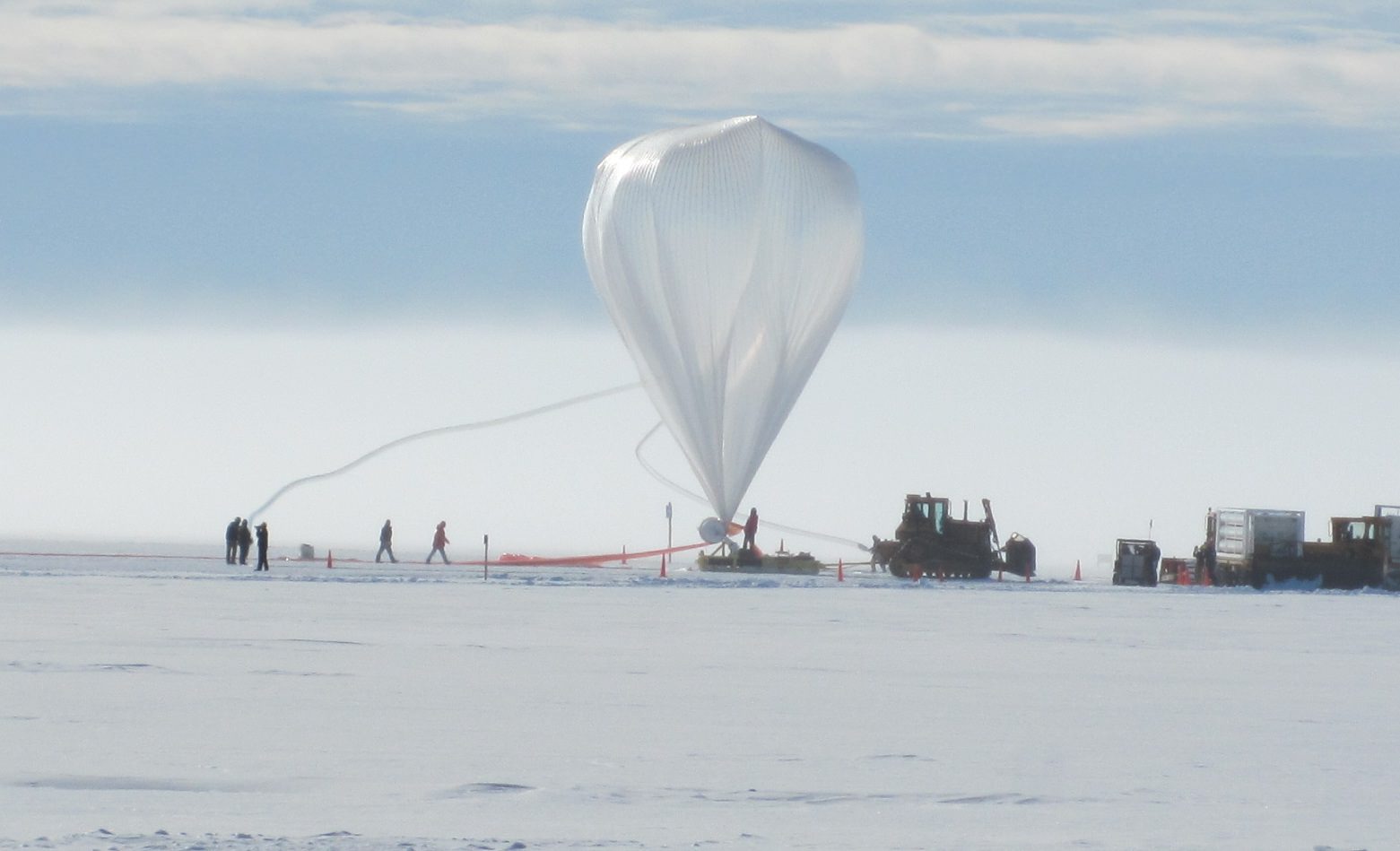Super-TIGER prepares for launch from Antarctica.
NASA’s Super-TIGER science balloon landed Friday at a frigid and remote base in Antarctica after setting two duration records while gathering data about cosmic rays. There’s so much data that it will take scientists about two years to analyze, according to NASA.
Launched December 8, 2012 from the Long Duration Balloon site near McMurdo Station in Antarctica, the Super Trans-Iron Galactic Element Recorder balloon spent 55 days, 1 hour and 34 minutes aloft, shattering records previously set in 2009 by another NASA balloon for longest flight by a balloon of its size. The 39-million cubic foot balloon, spent most of its time cruising four times higher than commercial airlines at about 127,000 feet (almost 39 kilometers). The instrument is managed by Washington University in St. Louis, Missouri.
“Scientific balloons give scientists the ability to gather critical science data for a long duration at a very low relative cost,” said Vernon Jones, NASA’s Balloon Program scientist, in the press release. “Super-TIGER is scientific ballooning at its best.”
Super-TIGER measured rare heavy elements, such as iron, as they bombarded Earth from the Milky Way. The instrument detected about 50 million of these high-energy cosmic rays. Scientists hope the data from the mission will help understand where the energetic nuclei are produced and how they achieve such high energies.
NASA had three long-duration balloon missions in the summer skies of Antarctica. SuperTIGER was joined by BLAST and EBEX. All three balloons launched from the site near McMurdo Station in December. BLAST, or Balloon Borne Large Aperture Submillimeter Telescope launched Christmas Day and measured the polarized dust in star-forming regions helping astronomers determine if magnetic fields are a dominant force over turbulence in star-forming regions of the galaxy. BLAST’s mission lasted just over 16 days.
EBEX, the heaviest scientific payload borne aloft by a NASA balloon, measures cosmic microwave background radiation. The mission lasted 25 days and reached altitudes of 118,000 feet (or 36 kilometers).
Antarctica, it turns out, is ideal for these types of long-duration balloon missions with sparse populations and anticyclonic (east to west, counter-clockwise in the southern hemisphere) wind patterns in the stratosphere.
Source: NASA

